Sign, Sign, Everywhere a Sign
The city would be far safer if we eliminated most of the road signs.
Look straight ahead. Keep your hands on the bars. And don’t stop peddling. There were only three things to remember when you learned to ride a bike.
Short cuts like this are necessary for us to keep up with the world. The human brain is a million times slower than an iphone. We can’t see everything but can figure out what’s important.
This insight has prompted traffic engineers in Europe to rethink street street signs. “When there’s a problem with a road, they always try to add something,” says Dutch traffic engineer Hans Monderman, who led the movement to reduce signage. “To my mind, it’s much better to remove things.”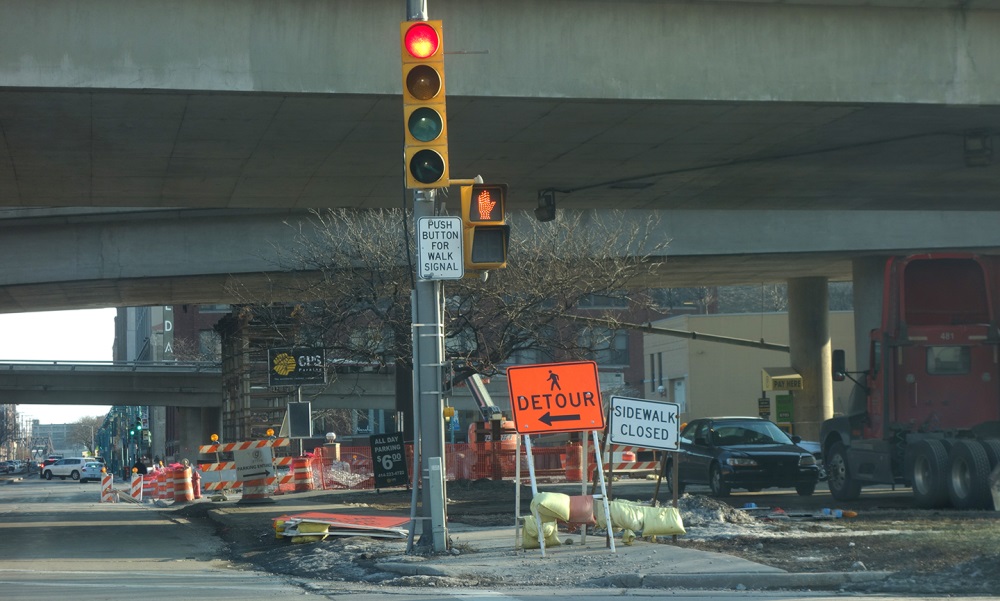 It is easier to see what is going on here without all the clutter. I erased all the signs, including Push Button for Walk. It’s redundant, like a sign that says use handle to open door.
It is easier to see what is going on here without all the clutter. I erased all the signs, including Push Button for Walk. It’s redundant, like a sign that says use handle to open door.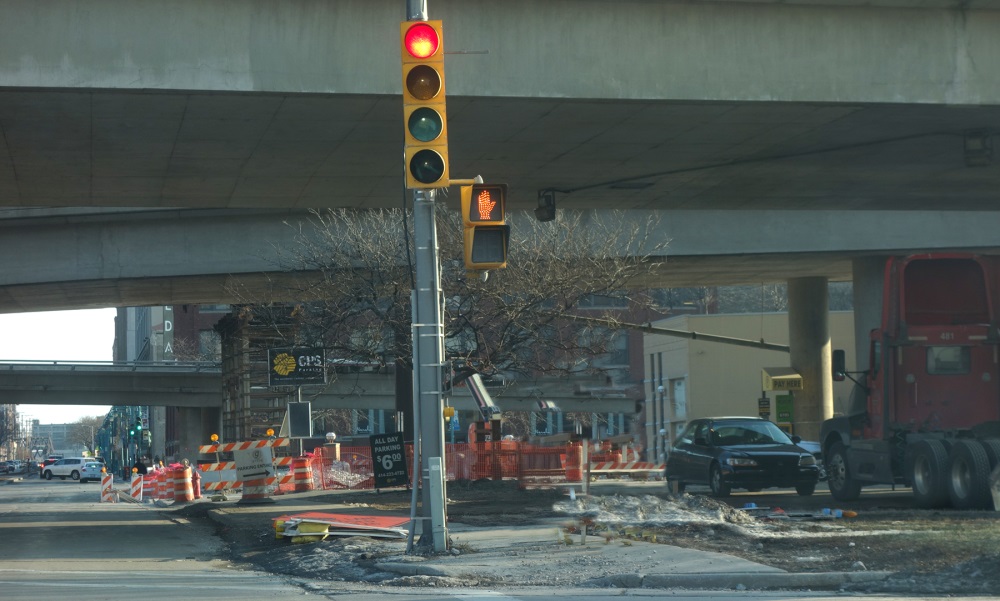 Redundancy is particularly unforgivable on the road because signs are always a distraction from watching where you’re going.
Redundancy is particularly unforgivable on the road because signs are always a distraction from watching where you’re going.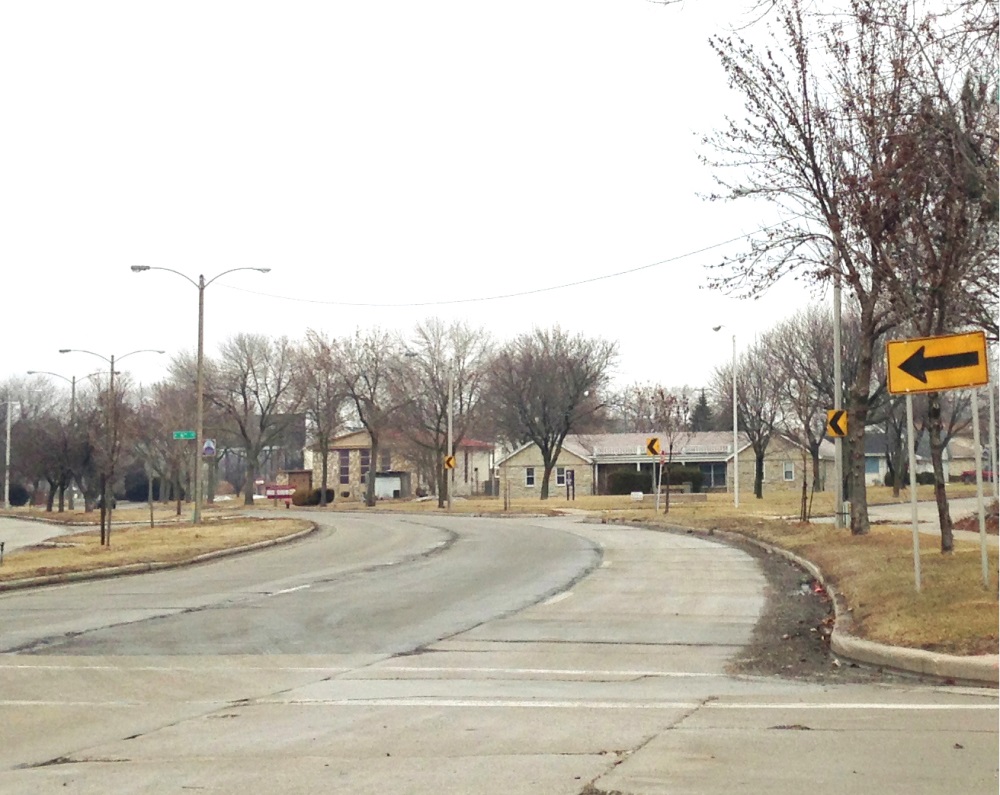
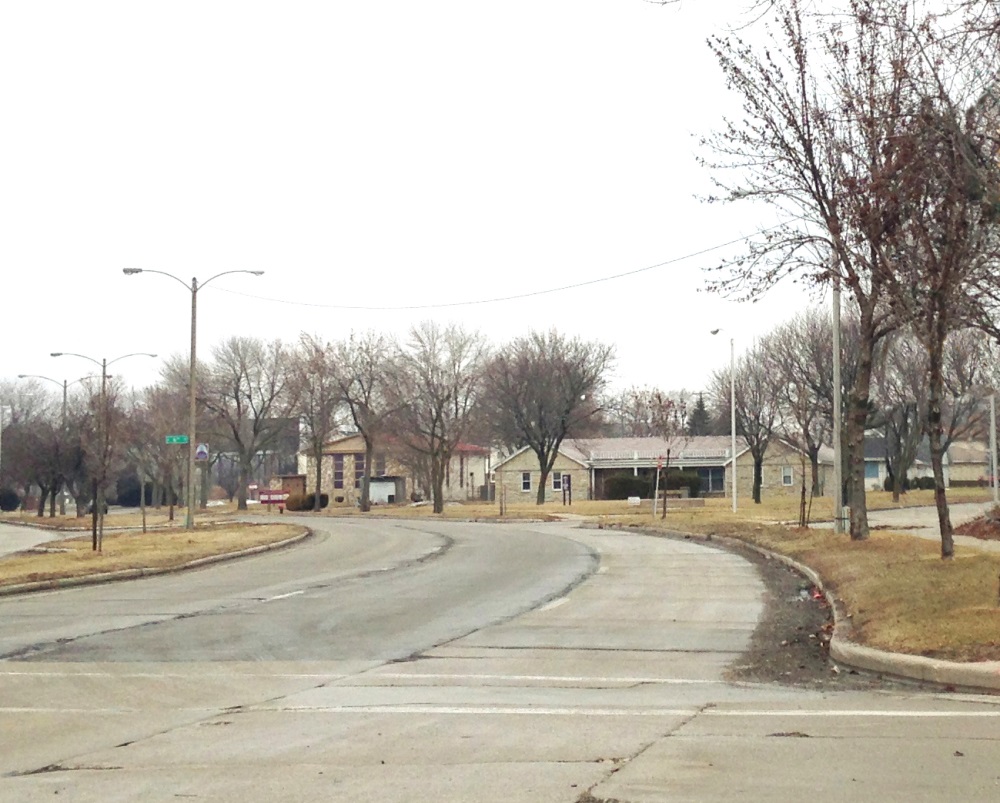 Research has shown we go faster around curves like this after the signs go up. This adaptive behavior is called “risk compensation”: we tend to be more alert to perceived risks and less concerned by stated ones. We trust our instinctual risk assessments over government warnings. And by the way: Telling us to beware of the least dangerous curve imaginable undermines the basic idea that sign can be about anything important.
Research has shown we go faster around curves like this after the signs go up. This adaptive behavior is called “risk compensation”: we tend to be more alert to perceived risks and less concerned by stated ones. We trust our instinctual risk assessments over government warnings. And by the way: Telling us to beware of the least dangerous curve imaginable undermines the basic idea that sign can be about anything important.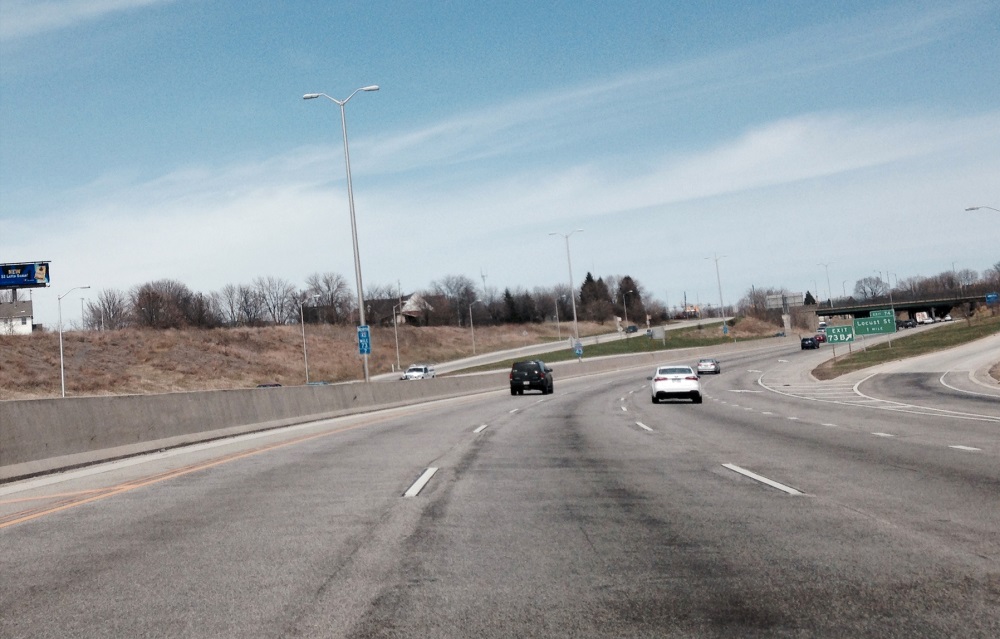
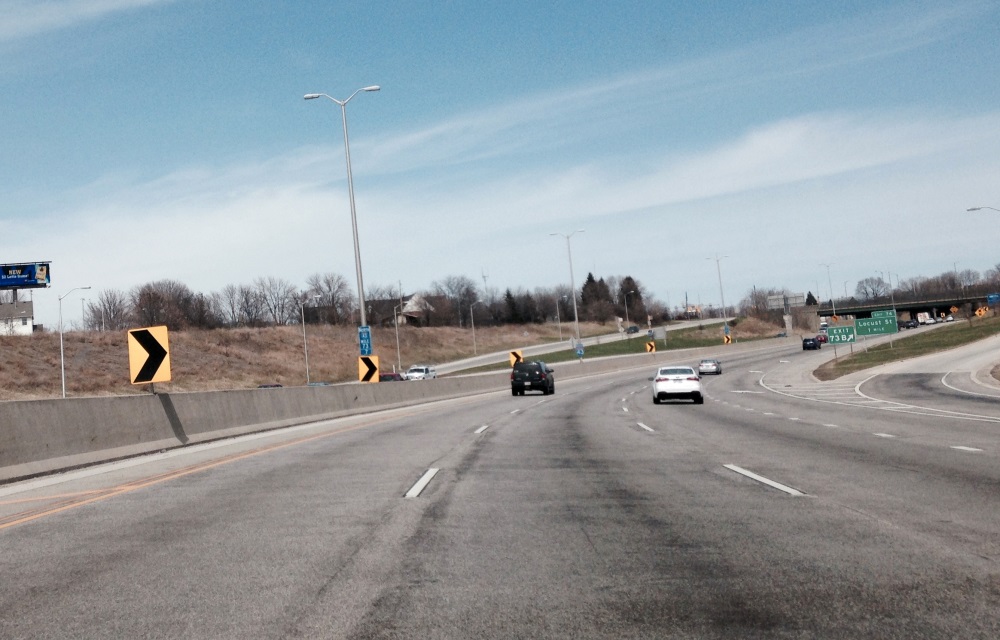 That not to say that we just ignore them either. They are designed to attract your attention. But signs are not self-evident like the cars, poles, and the curbs of the road. First you see a sign. Then you read it, figure out what it means. Deciding to ignore the message is the the third step of a labor intensive cognitive process.
That not to say that we just ignore them either. They are designed to attract your attention. But signs are not self-evident like the cars, poles, and the curbs of the road. First you see a sign. Then you read it, figure out what it means. Deciding to ignore the message is the the third step of a labor intensive cognitive process.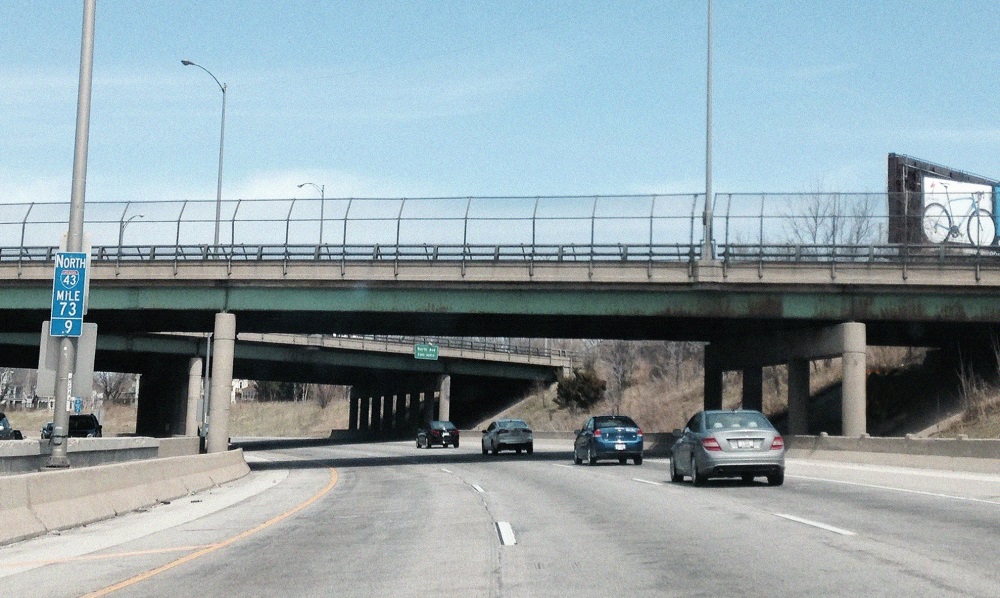 Meanwhile you are going a mile a minute. Not much time for all this reading.
Meanwhile you are going a mile a minute. Not much time for all this reading.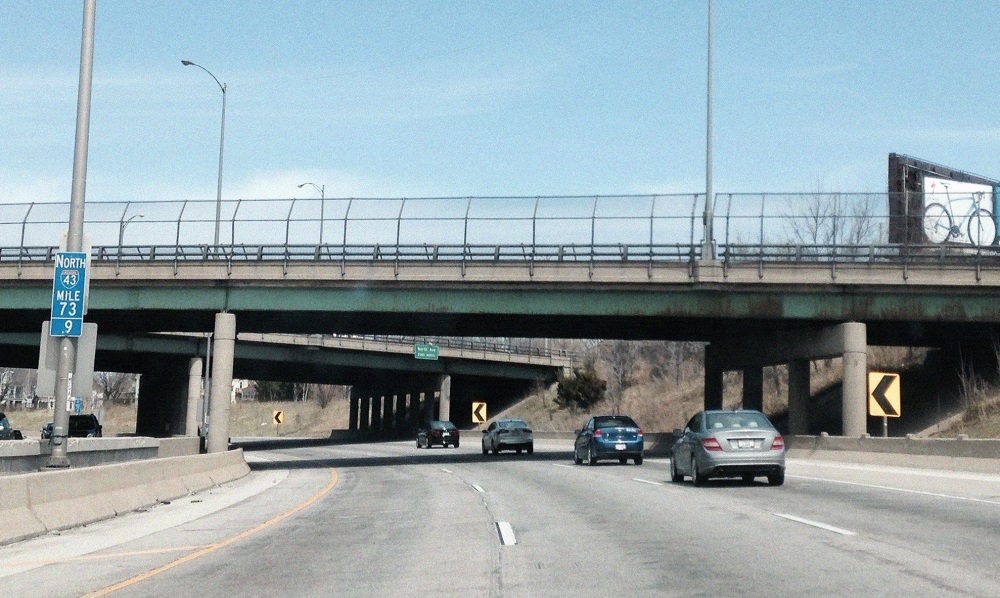 We all know these arrows are not pointing out the concrete supports for the bridge. The world is full of visual puzzles like this one.
We all know these arrows are not pointing out the concrete supports for the bridge. The world is full of visual puzzles like this one.
When you first saw your hand it was not connected to your body. When a bus drives by a picket fence it literally turns into bus-slices. Cognitive scientists call this the “binding problem.” A lot of unconscious brain power is required to deal with the ambiguity of the world.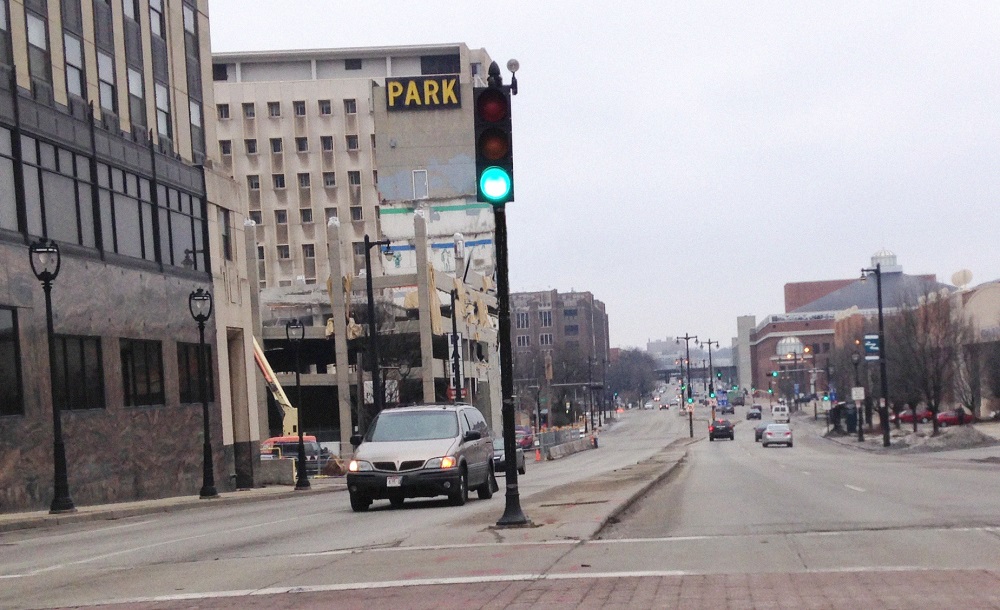
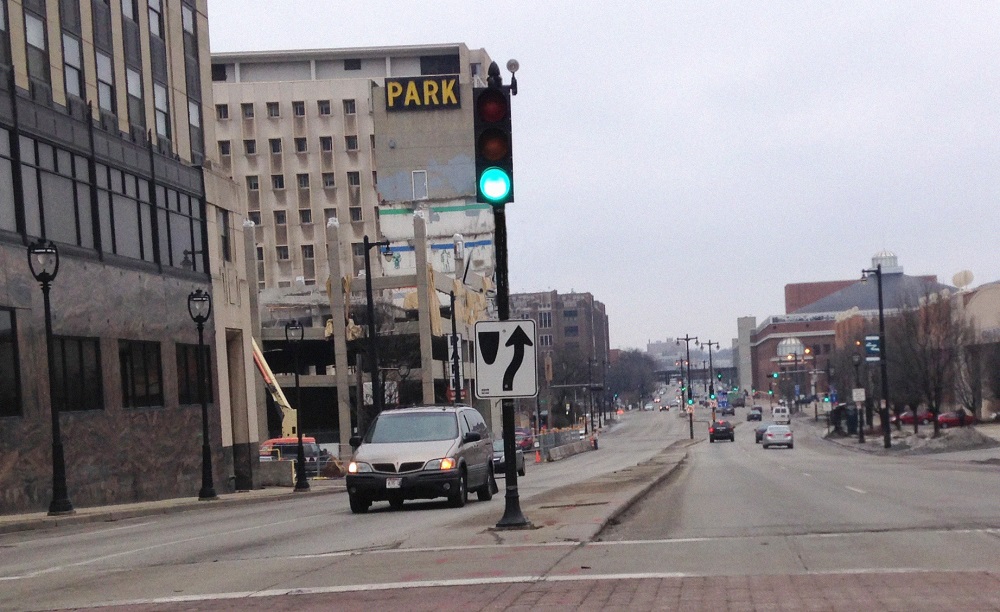
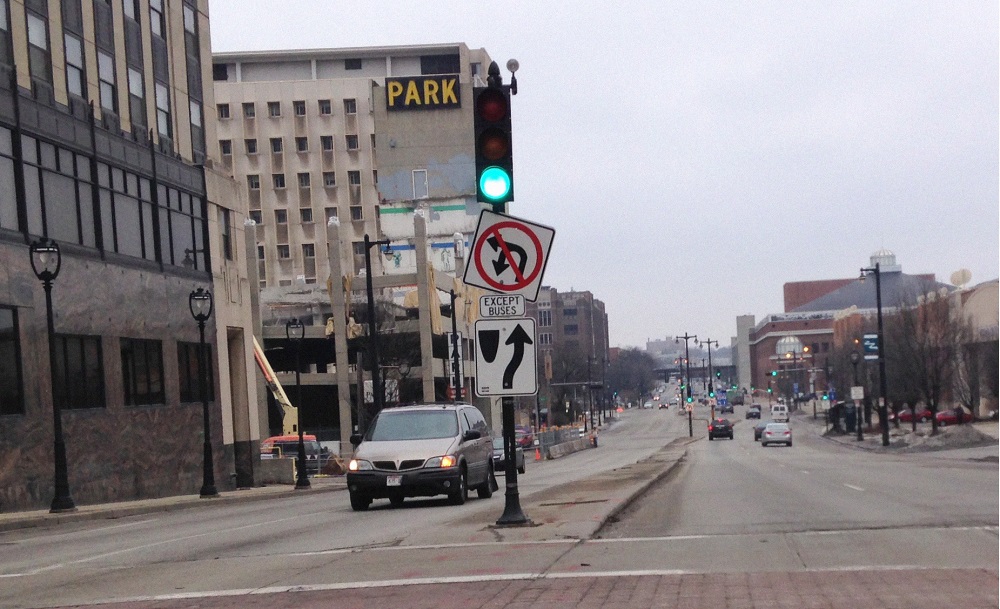 Clarity is important.
Clarity is important.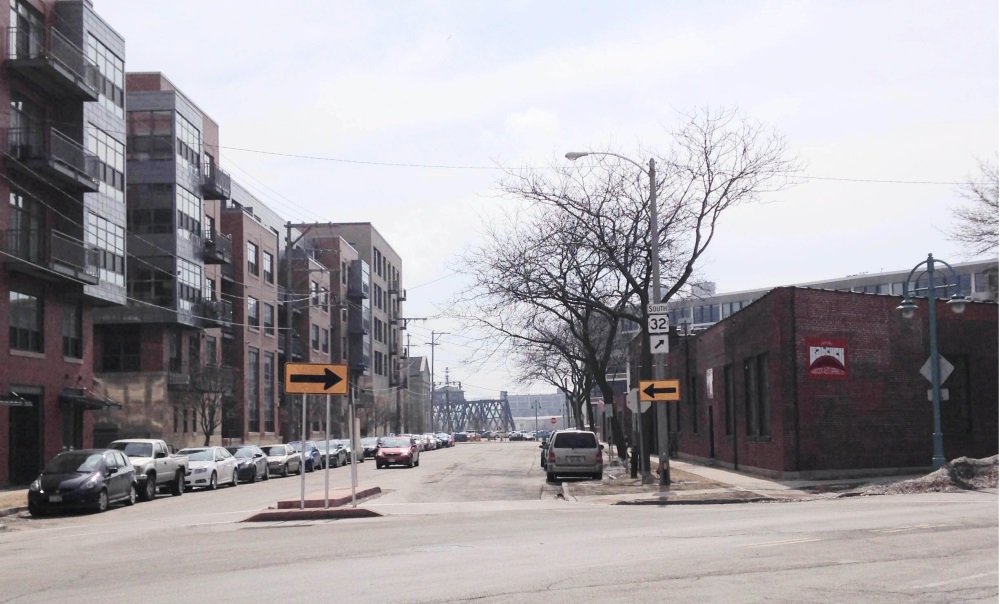
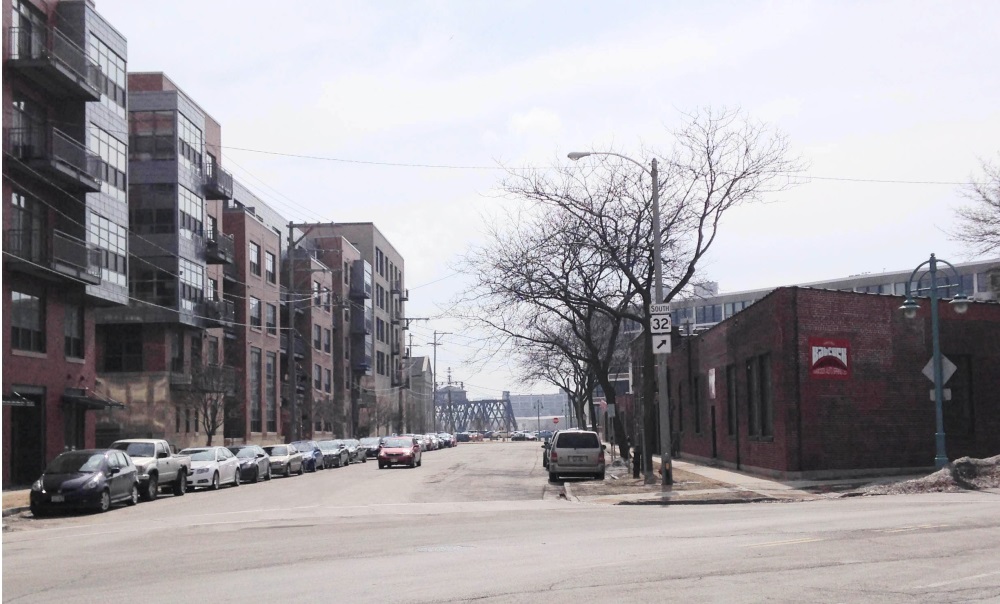 I got rid of the pedestrian island as well. “Safety measures” in the middle of a normal city street are a dumb idea. So are bump-outs that need warning signs not to bump into them.
I got rid of the pedestrian island as well. “Safety measures” in the middle of a normal city street are a dumb idea. So are bump-outs that need warning signs not to bump into them.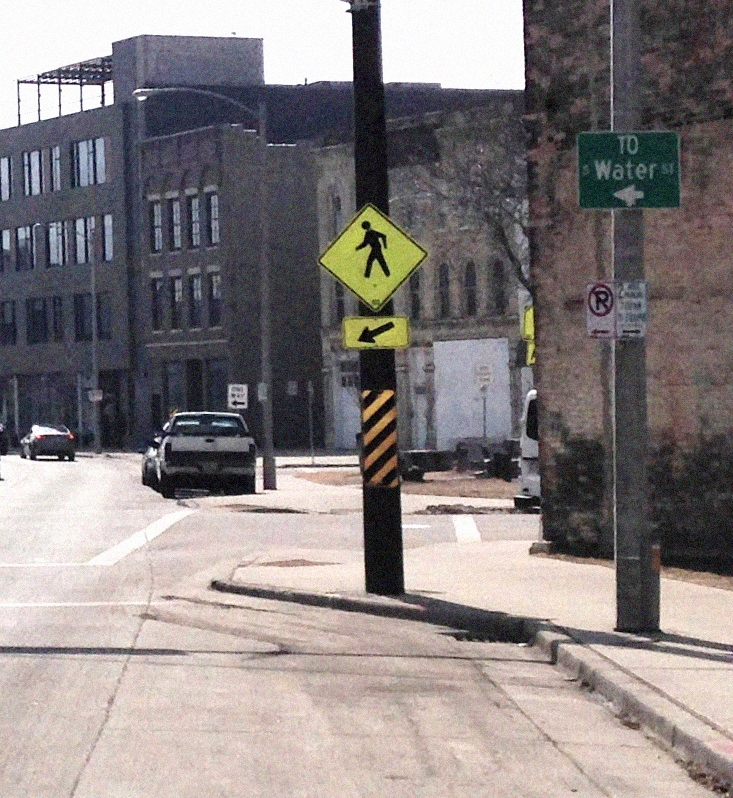 What would it say about us if this worked, if it was the only way to keep motorists from mowing down pedestrians?
What would it say about us if this worked, if it was the only way to keep motorists from mowing down pedestrians?
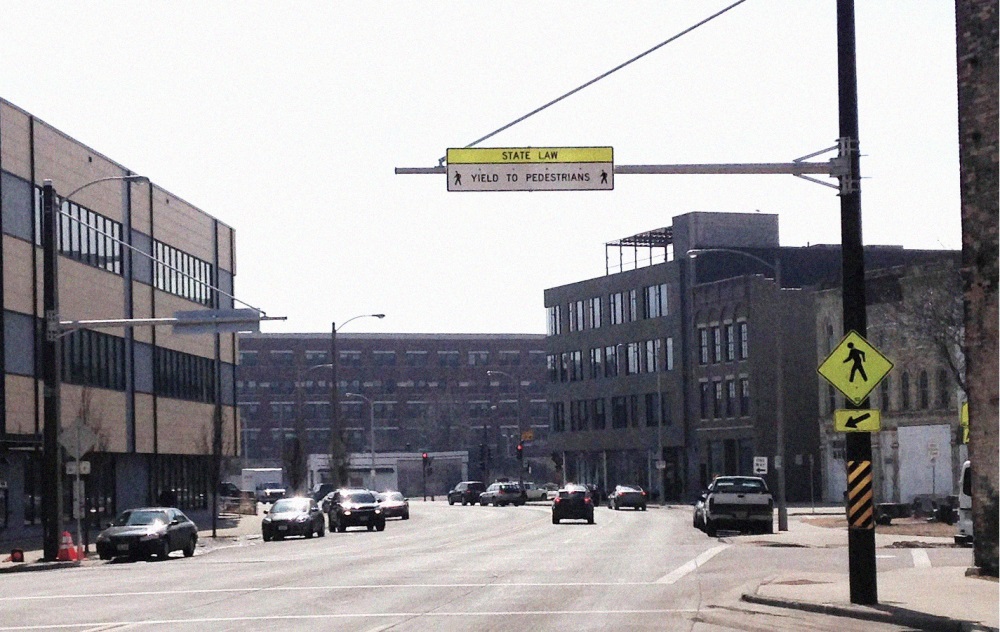
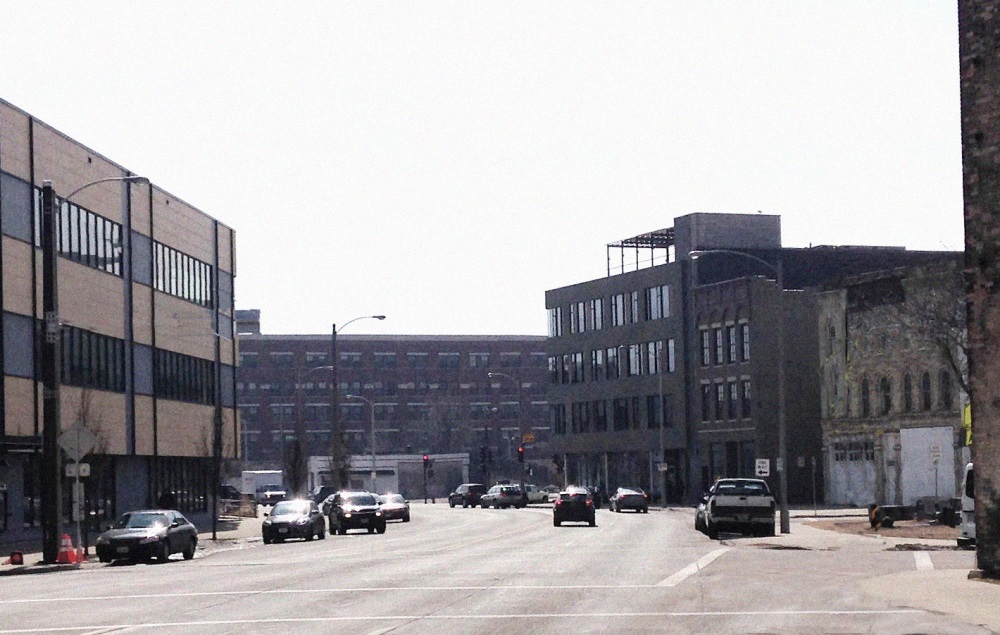 Now that’s better. The world falls into register without all the messages begging for our attention.
Now that’s better. The world falls into register without all the messages begging for our attention.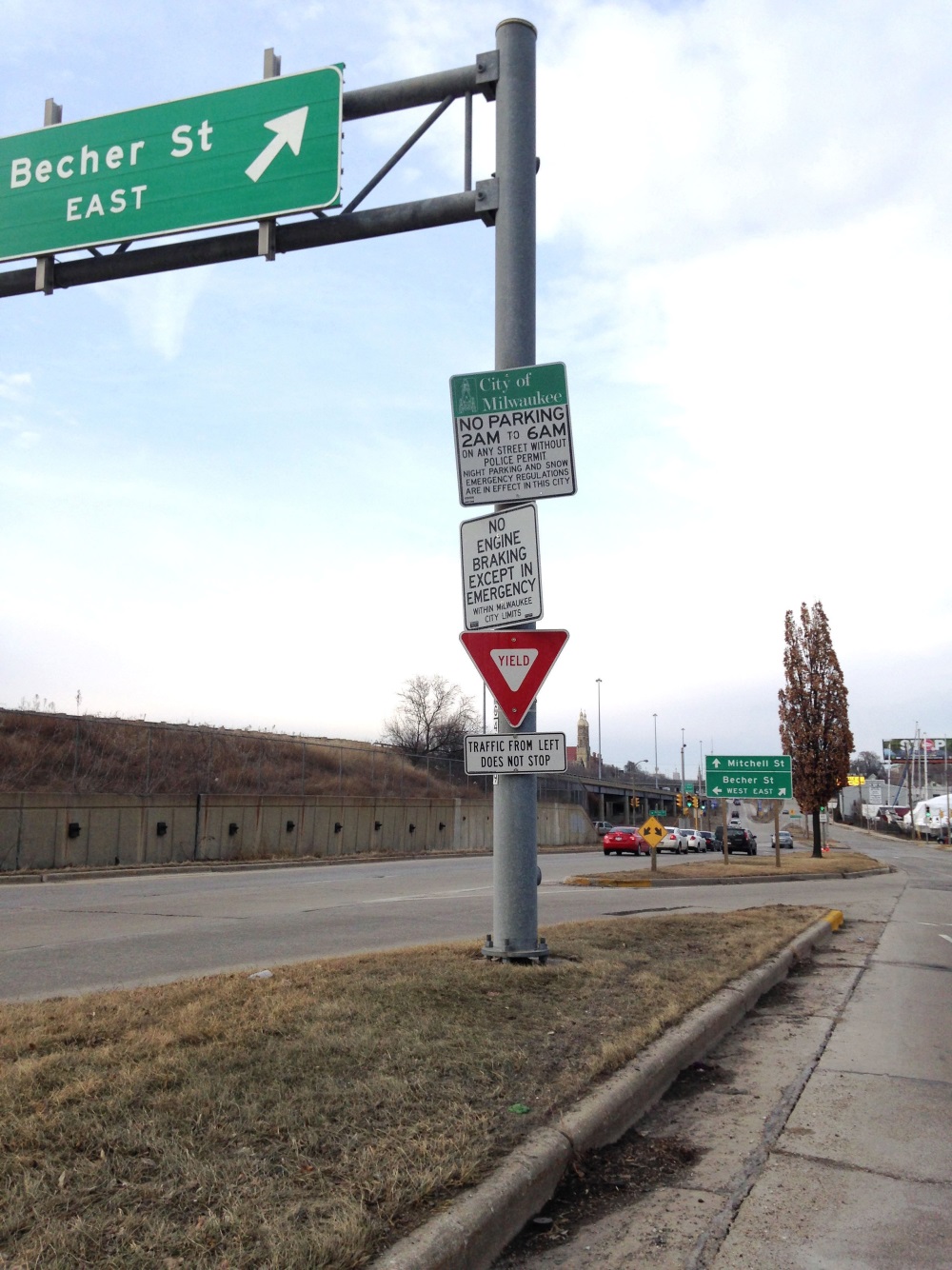 No Engine Braking Except In Emergency. I had to think about that for a minute.
No Engine Braking Except In Emergency. I had to think about that for a minute.
Only a lawyer would think to post parking regulations when drivers are stressed out navigating their way on to a freeway.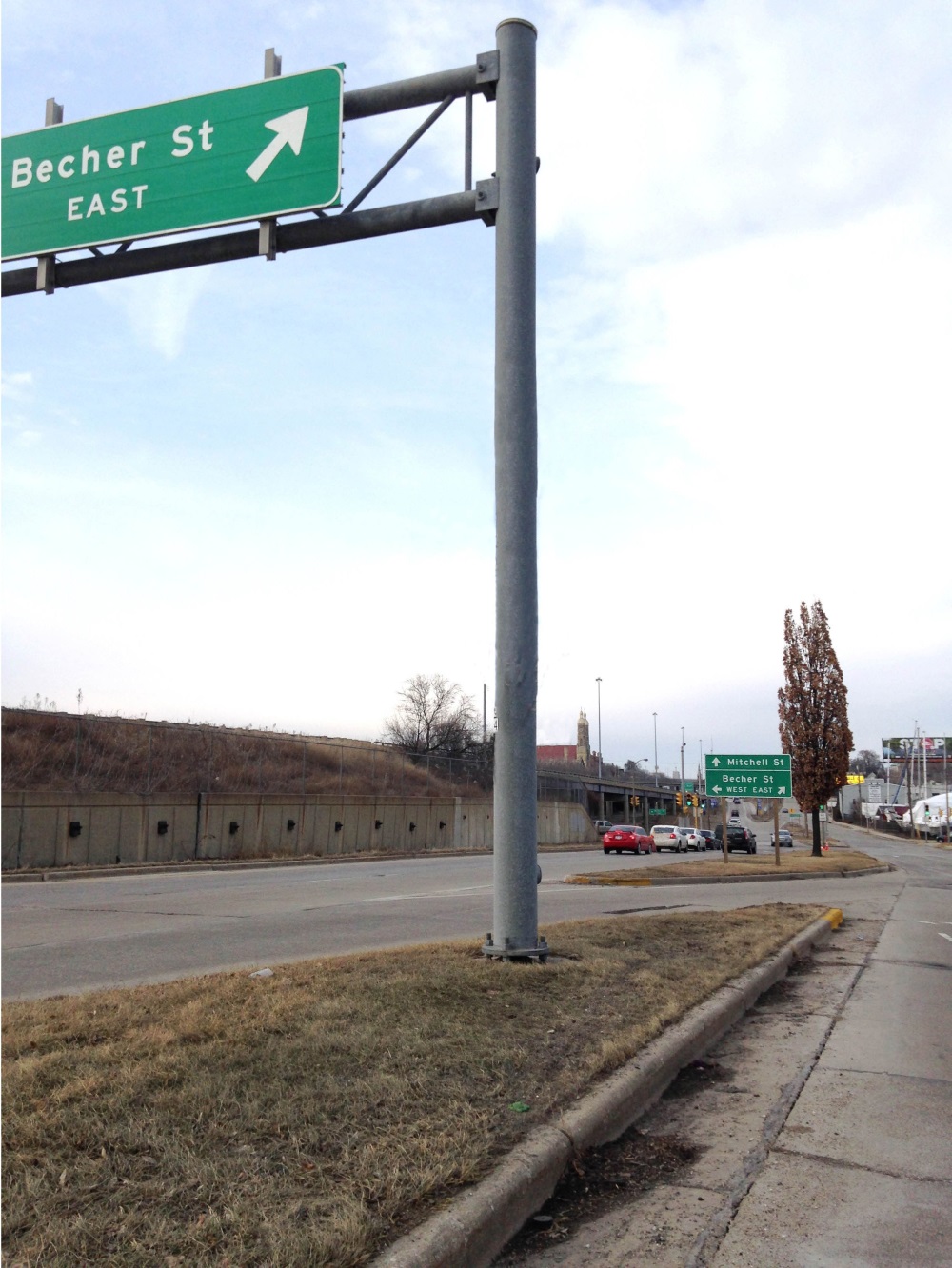
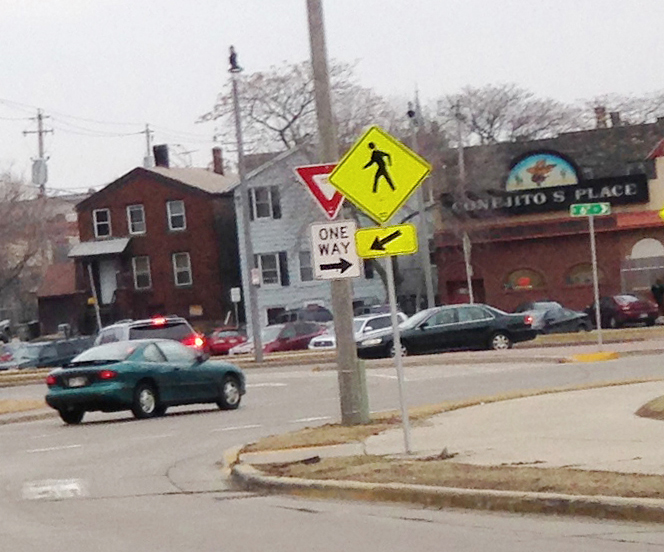 Why make driving harder than it looks?
Why make driving harder than it looks?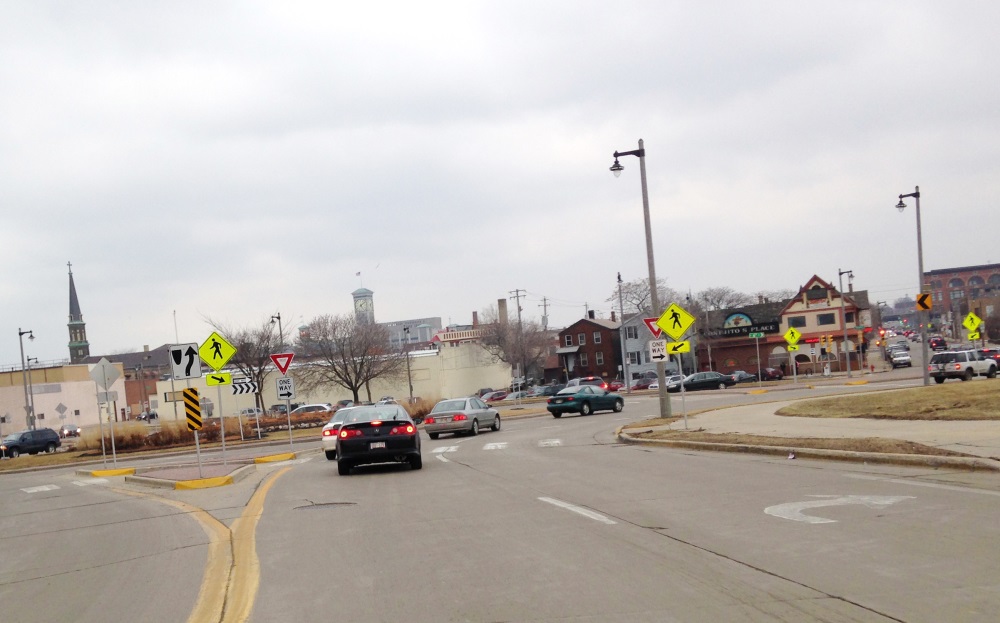 Roundabouts are a natural remedy that keeps the traffic flowing at complex intersections.
Roundabouts are a natural remedy that keeps the traffic flowing at complex intersections.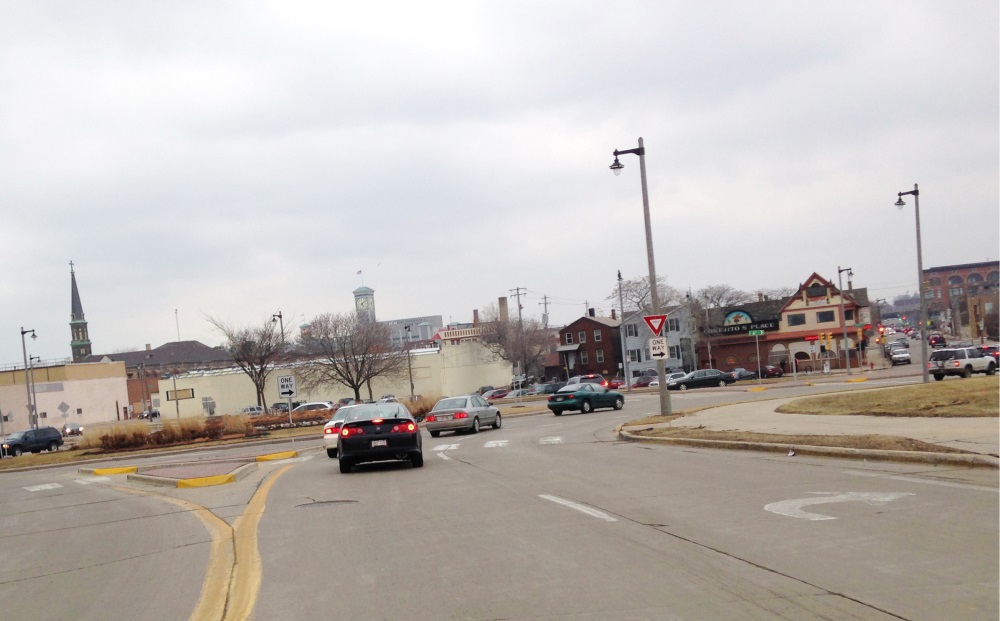
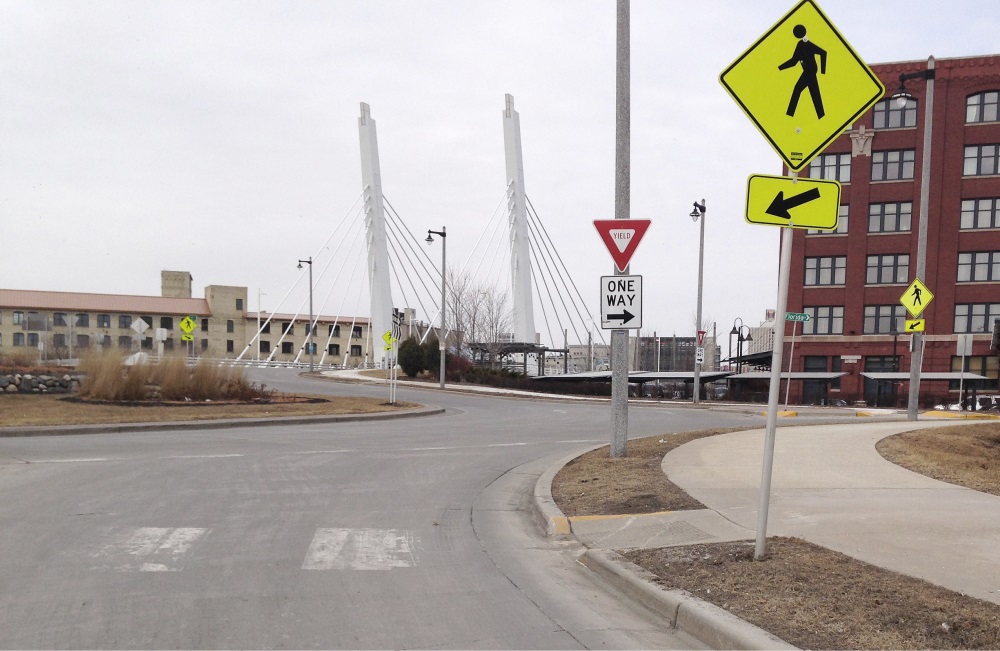 I took 25 signs out of this picture.
I took 25 signs out of this picture.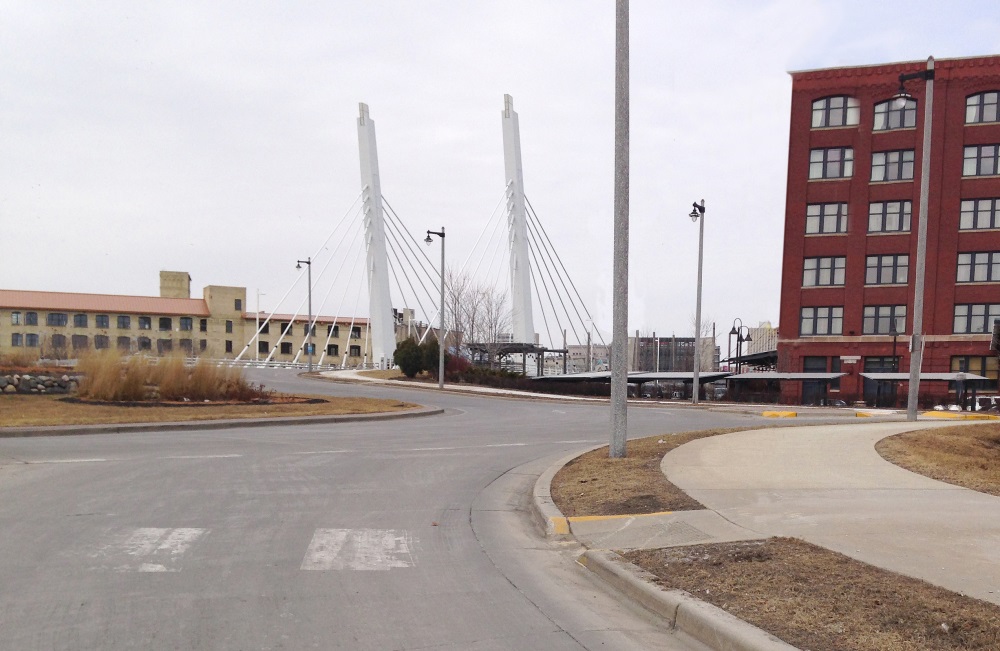 There is no getting past all these pedestrian signs. Lime-yellow is the most visible and aggressive color in the spectrum.
There is no getting past all these pedestrian signs. Lime-yellow is the most visible and aggressive color in the spectrum.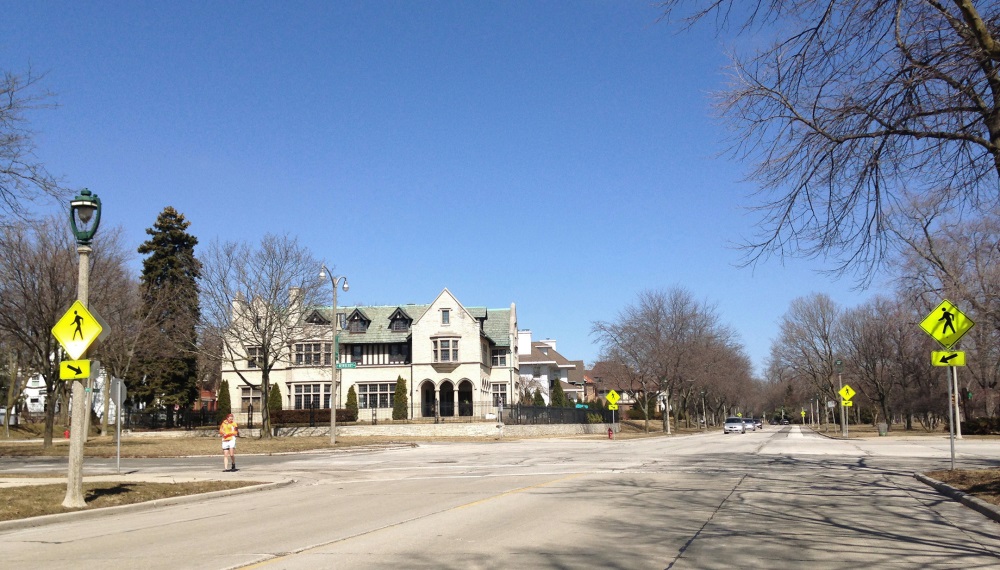 Four signs and arrows pointing in different directions at one intersection grab your attention, which makes it harder to see the pedestrian on the left crossing Newberry Boulevard.
Four signs and arrows pointing in different directions at one intersection grab your attention, which makes it harder to see the pedestrian on the left crossing Newberry Boulevard.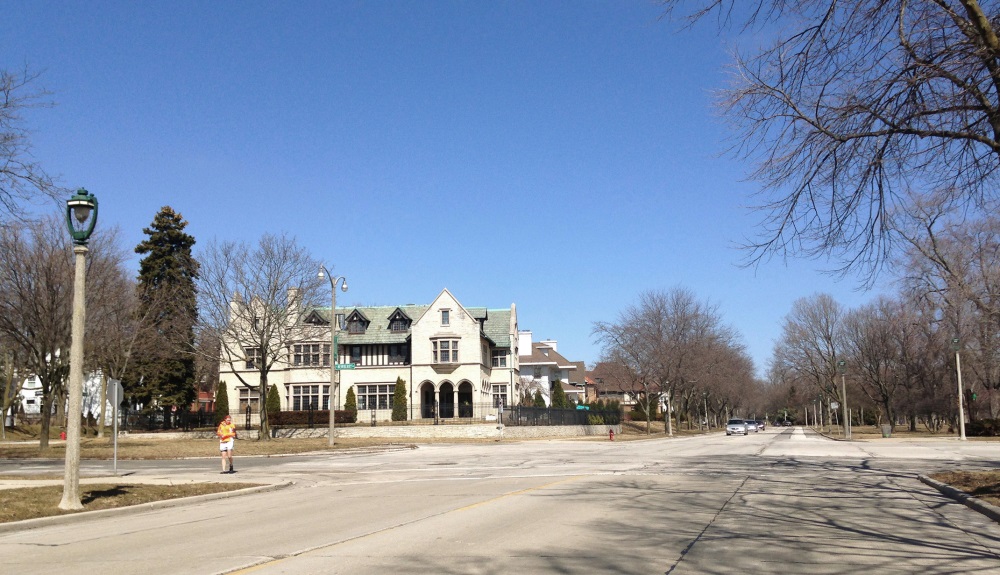 Why all the worry about this intersection that has none of the risk factors associated with pedestrian fatalities (low income and drinking). How many years or decades has it been since we had a traffic fatality of any kind at Newberry Boulevard and Lake Drive?
Why all the worry about this intersection that has none of the risk factors associated with pedestrian fatalities (low income and drinking). How many years or decades has it been since we had a traffic fatality of any kind at Newberry Boulevard and Lake Drive?
What about drunk drivers? They would be the last person you’d want reading signs rather than looking at the road.
Does any sign make us safer?
The research points in the other direction. Flashing “deer crossing” signs, for example, increase deer deaths even though the number of deer decreased at those crossings. (Deer don’t like these signs either). All the more reason to take down that “children at play” sign you asked the city to put in front of your house.
There are more pedestrian signs than pedestrians in most parts of the city. You easily can pass 50 of these signs driving to work. It’s mind boggling, all the more so after you realize what they are saying.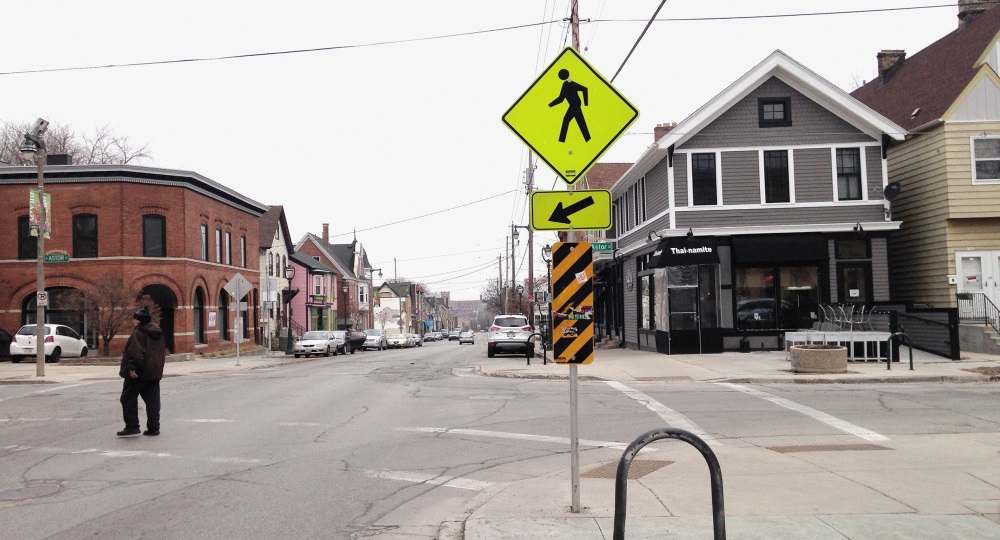 DANGER — People walking.
DANGER — People walking.
Do motorists have to be reminded again and again that people walk in cities, that it’s not a drive thru?
This excessive alarm about a human presence on the street violates common sense and is annoying. At a very early age we learn not to bump into things. We don’t need arrows pointing to people, other cars, trucks, buses, lampposts, curbs, trees, or anything else we can see.
Signs will never save us from ourselves. We will all be better off once we realize streets are not for cars. They’re for people in cars, on bikes or walking. A street is a social place where, if given a chance, we naturally look out for each other. People are the solution, not the problem.
In Public
-
The Good Mural
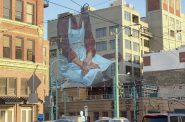 Apr 19th, 2020 by Tom Bamberger
Apr 19th, 2020 by Tom Bamberger
-
Scooters Are the Future
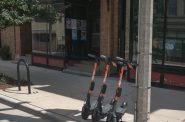 Dec 19th, 2019 by Tom Bamberger
Dec 19th, 2019 by Tom Bamberger
-
Homeless Tent City Is a Democracy
 Aug 2nd, 2019 by Tom Bamberger
Aug 2nd, 2019 by Tom Bamberger


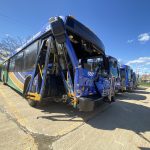














Do you really think removing a YIELD sign is a good idea in a society where drivers tend to assume that “I have somewhere to be, so I get the right-of-way”?
All of these photos were taken in optimal weather conditions. A lot of these signs are necessary during fog, storms, winter, etc. Take these signs down and watch how many more accidents and injuries happen.
Could there be a few signs taken down? I’m sure. A few at most.
On another note, why do you think your coffee cups at McDonalds have warning labels about the coffee being hot? Liability. Lawsuits. Now think about that for city safety and taxpayer dollars being used for a lawsuit that could have been prevented with a simple sign.
Also, there’s a picture on Brady Street. Are you aware that people have been hit by vehicles here several times over the last year? And you’re proposing taking down these signs?
People already feel unsafe walking around there due to the accidents that have happen. Taking away those signs will only create more problems.
While I’m inclined to agree with Mr. Bamberger – how often do drivers realistically check every sign that they are intended to (the one at the freeway entrance was ludicrous) – though he really should have more statistics to support the removal argument.
I believe he mentioned something about cities in Europe trying this. Perhaps they published their results?
Real life sign removal has happened and has reduced accidents.
http://en.wikipedia.org/wiki/Drachten#Traffic_experiment
Regarding the research ….. what’s remarkable is that I couldn’t find any research that suggests signs work. As I say in the story
“Does any sign make us safer?
The research points in the other direction. Flashing “deer crossing” signs, for example, increase deer deaths even though the number of deer decreased at those crossings. (Deer don’t like these signs either). All the more reason to take down that “children at play” sign you asked the city to put in front of your house.”
This is from “Traffic: Why we Drive the Way We Do …. http://www.amazon.com/Traffic-Drive-What-Says-About/dp/0307277194
I had a lot of fun reading this article. I missed 8 of the signs you removed when you removed 25 signs. It was a challenge. I was grateful I could attempt this while sitting stationary looking at a computer screen but never would advise doing so while driving. Visual clutter is something that environmental designers study and critique. Why hasn’t anyone correlated reading an overage of signs with the danger of reading texts or distracting oneself from keeping one’s car in one’s lane at the appropriate speed, following the road, adjusting with the movement, speed and velocity of fellow travelers, weather and traffic conditions? Driving is some ways like riding a bus. There is an accepted conviviality to the experience. People, moving together with other people, make small corrections that are polite and civil. Making the physical city an over navigated web browser of information and directional instruction simultaneous with commercial seduction degrades public space and removes what is important from our field of view… namely people and place.
Too many sign? Well, it’s easier to add one more than to take one away. And there probably are no studies because control groups would have many variables. But signs of curves? I wonder what two comparing photographs would do if they could capture the driver’s vision at night or in heavy rain or snow.
Reminder signs of pedestrian traffic are going to be needed until we get the courtesy that is normal in other cities. For now, I rely on my hand to signal to drivers that I am crossing the street. This is no city to take anything for granted. But each crossing is a teaching moment, to both driver and walker.
Moving to a world of fewer or no signs would seem to be part of a larger driver education. Pedestrians willing to contribute to the process (but walk slowly so you can escape a heedless driver) should tell their stories.
Bill,
Signs don’t educate. They annoy. More pedestrian signs make it worse rather than better for pedestrians.
Read the article again…..
Please.
Thanks.
Signage and assorted other visual aids are used in factories to help keep people safe, and the same is true on streets and highways. I think you would be shocked, Tom, and probably left shaking your head at the amount of time, effort, and attention many major corporations expend trying to keep their workers safe. Likewise, (most) streets aren’t intended to be works of art. They are meant fundamentally to be both safe and functional.
Mountain roads have proven that by using reflective devices on the road guides drivers in low visibility situations. A
ll of this will be solved when we are using computer driven vehicles or we finally admit that public transportation makes more sense than one person driving a car.
I totally agree!
Stephanie
If we stop making so many signs, how will Tapco stay in business? You guys just don’t understand how the world works. I mean, the next thing you’re going to suggest is doing less massive road construction. How will companies like Zenith Tech and Michaels stay in business?
Can’t help but agree on much of this, especially the pedestrian crossing signs. So few actual pedestrians wear colors so bright, and so one’s eye is drawn to the sign and, perhaps, away from the pedestrian. I have long wondered what exact message they were sending: Look out for pedestrians here? But experience says you ought to be looking out for pedestrians everywhere. They’re unruly, and often don’t stick to crosswalks, especially in rain. It’s not open season on them if they’re outside the ladder stripes. I really want your eyes on the road and my taillights, so when I spot Granny meandering toward the traffic mid-block, you don’t drive into my trunk.
I lived in the Bay area of California in the late ’80’s early ’90’s. The law that pedestrians have the right of way in crosswalks was ingrained in the minds of drivers there, such that if you stepped off the curb into the crosswalk of a non-regulated intersection (i.e.no stop/go lights), traffic came to a complete halt. I have no idea how drivers were educated about this and I can’t remember the signage situation, but Wisconsin could really use something similar.
Todd,
I am not saying all signage, like in factories is bad.
I am talking about street signs, and the research that suggests they can be counterproductive.
Tom
Tom, I recognize that sometimes signage can get excessive… but you’re eliminating some pretty important signs. As some already stated, those arrows are usually for inclement weather and often are put up after a number of incidents of drivers failing to negotiate a turn have already taken place. Plus yield signs and street names are pretty important as well.
I also take issue with the discussion on the pedestrian signage, especially since many people in Milwaukee do not realize pedestrians have the right away. So while they can be excessive and unnecessary in many places, you’ve taken shots of some locations where drivers are going fast and often don’t even realize pedestrians may be crossing (for example the picture right as someone crosses the river into walkers point).
There are plenty of studies that show the positive effects of pedestrian signage. The basic pedestrian crossing sign is the least effective sign, but depending on the location and type of crosswalk they generally show a positive impact on pedestrian safety. So while other signs like in road pedestrian crossing signs show even more positive impacts, this are a good start in many situations. If you’d like to see these studies, I can put up some links this evening.
I generally agree with you that more signs is not necessarily a good thing, but it seems like your view of signage is really quite extreme.
Andy, you say there are “plenty of studies that show the positive effects of pedestrian signage.” You would think so, but where are these studies? I have not found a single one that shows pedestrian signs have any effect on pedestrian fatalities. And as I mentioned in the article, there is lots of empirical support that signs actually make things worse.
Regarding poor visibility, obviously there are some situations, like a turn on a mountain road, where sign are necessary. But that is not the case for examples I illustrate in the article. In those cases common sense keeps us safe. We naturally slow down. If drivers navigate according to the signs indicating a gentle bend in I94 we are all in deep trouble.
I wish people in Milwaukee would stop referring to studies from the Netherlands and Germany without appreciating that streets there are much much narrower and crowded, and drivers are required to take much more drivers education before they can get a license, which is why getting rid of regulations works. You don’t see regular streets with 30mph speed limits, 12-14ft wide traffic lanes and nearly empty parking lanes (which too many drivers here seem to think are for passing on the right) in the Netherlands. If it’s not possible to drive much more than 20 or 25mph then there isn’t a need for signs. If the roads are built so that you can see six blocks down and easily drive 45mph, then things like crosswalk markings, bump outs, and speed limit signs become a necessity.